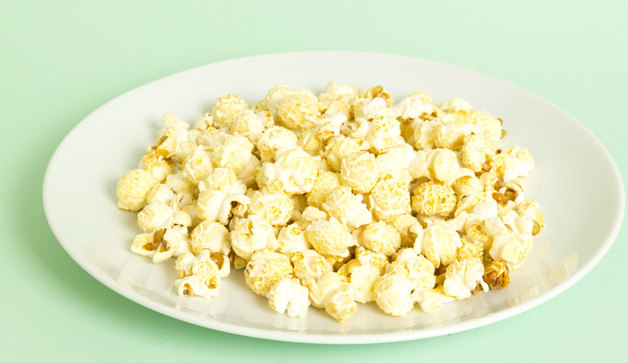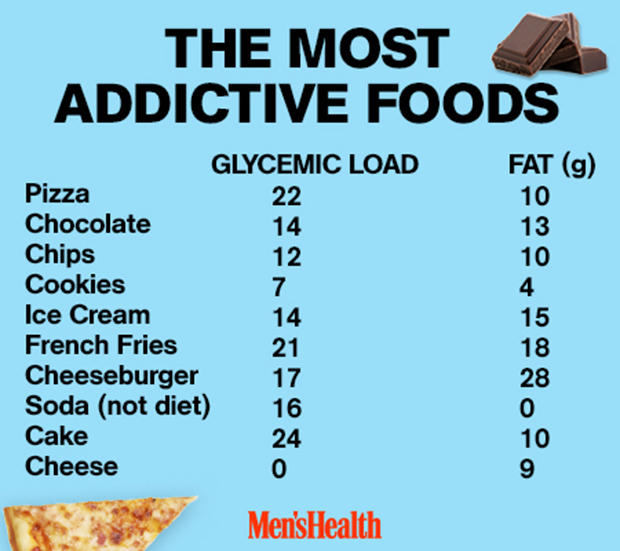How to Create an Atkins Diet Menu Plan
The Atkins Diet claims that it can help people lose weight quickly, and keep it off, by following a multi-phase plan of eating guidelines. The distinctive features of the Atkins Diet are the avoidance of most carbohydrates and the encouragement of proteins and fats. You can create a meal plan for the Atkins Diet that incorporates a variety of meats, cheeses, nutritious vegetables, and other foods.
Steps
Part 1 Educating Yourself About the Plan
-
1
Discuss your diet plans with your doctor. Before beginning the Atkins Diet, you should discuss your plans with your doctor or healthcare provider. Sticking to the Atkins Diet means major changes, and your doctor can advise you on whether or not this is a good idea for you and your overall health.
- The Atkins Diet isn’t necessarily for everyone. For instance, breastfeeding mothers and people with severe kidney disease should not begin this diet.[1]
- Following the Atkins diet can cause some side effects such as headache, nausea, irritability, and bad breath.[2] Your doctor can discuss the risks with you.
-
2
Understand the principles behind the Atkins Diet. This plan focuses on reducing or eliminating carbs from your diet, while encouraging the consumption of proteins and fats. The Atkins Diet proposes that controlling the foods in you eat in this way will lead to weight loss and long-term healthy eating.[3]
- There are many resources available online to research the Atkins Diet, as well as books on the topic, like Dr. Robert Atkins’ “Dr. Atkins' New Diet Revolution and Atkins for Life.”
-
3
Understand the stages of the Atkins Diet. There are four distinct phases to this plan: Induction, Balancing, Pre-maintenance, and Lifetime maintenance.[4] Many people begin at the first phase, Induction, to maximize weight loss. However, you can begin the diet at any of the first three phases.[5][6]
- Working with a dietitian or doctor on this program can ensure that you understand the program to the fullest degree.
Part 2 Eating During the Induction Phase
-
1
Eliminate almost all carbohydrates from your diet. For the first phase, Induction, you avoid eating nearly all carbohydrates. This includes breads, baked goods, grains, potatoes, sugary foods and drinks, fruits, alcohol, etc. This may be hard at first, so prepare yourself by slowly weening off carbs in the days leading up to your Atkin's Diet start date.
- You may consume no more that 20 grams of net carbs per day, and most of these carbs should come from vegetables such as asparagus, broccoli, and green beans.
- About two cups of loosely-packed salad, plus a cup of another vegetable, will equal approximately 20 grams of net carbs from vegetables.[7]
-
2
Eat generous amounts of protein-rich foods. In the Induction phase, you should also eat protein at each meal. You can choose from fish, poultry, red meat, pork products, eggs, cheese, etc.[8]
- The portion size of these proteins can be generous.[9]
- You do not need to restrict oils and fats.
-
3
Focus on “foundation vegetables.” These are low-carb vegetables that are especially beneficial for the first stage of the Atkins Diet, and you encouraged to eat them throughout the other phases. They include:[10]
- Leafy greens such as lettuce and spinach
- Crisp greens such as cucumbers, celery, broccoli, zucchini and green beans
- Other vegetables such as peas, eggplant, tomatoes, onions, cauliflower, and peppers.
- 4 Drink plenty of water. During the Induction phase of the Atkins Diet, you should drink eight glasses of water per day. This is important to avoid dehydration and constipation.[11]
- 5 Follow the guidelines of the Induction phase for at least two weeks. If you are beginning the Atkins Diet at the Induction phase, you will need to follow these guidelines for at least two weeks to maximize your transition and weight loss. If you want to or need to lose more weight, you may stay in this phase longer.[12]
-
6
Develop a menu plan. Knowing ahead of time what you can and will eat while on the Induction phase will help you succeed at the start of the Atkins Diet. It will keep you organized, focused, and on track. A typical menu for this phase might include:
- For breakfast: a good source of protein like scrambled eggs, with ingredients like onions and cheese, and 3 breakfast sausages. Coffee, tea, water, or diet soda are acceptable beverages in the Induction phase and throughout the other phases of the Atkins Diet.[13][14]
- For lunch: a salad with a protein such as chicken, and an acceptable beverage. Another option is a bacon cheeseburger (without bun).[15][16]
- For dinner: Salmon, asparagus, and a salad, and an acceptable beverage. Another option is a shrimp cocktail, baked chicken, and a small salad.[17]
- Snacks (up to two per day): An Atkins Diet product (these include shakes, granola bars, etc), diet gelatin with artificially-sweetened whipped cream, or a protein-rich, low-carb snack like celery and cheddar cheese.[18]
Part 3 Eating During the Balancing Phase
-
1
Reintroduce certain foods. For the second phase, Balancing, you continue to restrict your intake of carbohydrates. You can consume about 25-30 grams of net carbs per day during the Balancing phase (a minimum of 12-15 grams of net carbs should come from vegetables), as long as your weight loss continues.[19]
- You can begin to reintroduce some nutritious sweet foods like berries, as well as nuts and seeds.
- You should, however, continue to avoid foods with added sugar.
- Notice how these foods make you feel. Remove them from your diet if the negatives outweigh the positives.
-
2
Determine your critical carbohydrate level. For the second phase, you should try to determine the amount of carbs you can have per day while not slowing your weight loss. This is known as your critical carbohydrate level (CCLL).[20] Determining this during the Balancing phase will help you to maintain the Atkins Diet in its later phases.
- You may have to experiment to determine CCLL, by adjusting the amount of carbs that you eat.
-
3
Expand your menu plan. During the Balancing phase, you can continue to eat the same foods that were acceptable in the Induction phase. In addition, you can expand your meal options to include reintroduced foods. For instance:
- Try mixed nuts as a snack.
- Add berries and/or nuts to a salad for variety.
- Serve nutrient-rich foods like green beans and avocados as a side with your protein at lunch or dinner.
- 4 Monitor your weight. You should continue eating according to the guidelines of the Balancing phase until you are about 10 pounds (4.5 kilograms) from your ideal weight.[21][22] If your weight loss stops, reduce your carb intake.
Part 4 Eating During the Pre-Maintenance Phase
-
1
Diversify the types of foods you eat. For the third phase, pre-maintenance (or “Fine-Tuning”), you can reintroduce fruits, starchy vegetables (such as potatoes), and whole grains. A lack of variety can cause boredom and eventual derailment of your plan
- Use this phase as a chance to reintroduce a carbohydrate that you especially prefer—potatoes, grains, etc. Keep in mind that you need to control the amount of this food that you eat.[23]
-
2
Slowly increase your carb intake. You can raise the amount of carbs you eat during the pre-maintenance phase by about 10 grams per week. You should cut back on your carb intake, however, if your weight loss stops. Stay in the pre-maintenance phase until you reach your target weight.
- As you reach your target weight, and reintroduce carbohydrates, you will develop a new CCLL.[24] Once you determine the CCLL for this stage, just make sure to keep your carb intake at or below this level.
-
3
Expand your menu plan. Since you are allowed to eat more types of food during the pre-maintenance phase, you can add more options to your menu possibilities. For instance:
- Have a small portion of french fries with your bacon cheeseburger (without bun) for lunch.
- Supplement your breakfast with a side of your favorite fresh fruit.
- Have a serving of whole grain, such as brown rice or quinoa, alongside a protein like baked chicken or grilled steak for dinner.
- Include slightly higher-carb vegetables and legumes, including: carrots (3/4 cup), acorn squash (1/2 cup), beets (1 cup) and potatoes (1/4 cup), apple (1/2), and kidney beans (1/3 cup). Each of these serving sizes has about 10 net carbs.[25]
- Remember to keep the daily amount of carbohydrates you eat within your CCLL.
Part 5 Eating During the Lifetime Maintenance Phase
- 1 Begin the fourth phase, Lifetime Maintenance once you reach your target weight. The Lifetime Maintenance is designed as a long-term plan of healthy eating habits. Continue to follow the guidelines of this phase for life.[26]
- 2 Focus your menu plan on proteins and low carb vegetables. As during the other phases of the Atkins Diet, you are encouraged to eat proteins—red meat, fish, pork, poultry, etc. In addition, 12-15 grams of your net carbs per day should still come from low-carb, “foundational” vegetables.[27]
-
3
Continue to monitor your carb intake. The net carbs you consume should still not exceed the new CCLL you set during the pre-maintenance phase.[28]
- As a rule of thumb, you can consume no more than 90-120 grams of net carbs per day if you exercise. However, you will have a better chance of maintaining your weight if you remain at your re-maintenance level CCLL.[29][30]
- You may need to alter your carbohydrates up and down depending on your weight and how it fluctuates.
-
How By Using This Oil You Can Lose 10 Pounds and Speed Up Your Metabolism ONLY In 2 Weeks
How By Using This Oil You Can Lose 10 Pounds and Speed Up Your
-
How to Use the Copenhagen Diet
The Copenhagen diet, also known as the 13-day or Royal Danish Hospita
-
Stay-Trim Tricks of the Trade: What Diet & Fitness Experts Eat
Secrets of a Fit Physician Seeing patients, saving lives, conducting r
-
Lady Doctor Reveals Top Secret Fat Loss Secret To The General Public!
Her name is Dr Suzanne Gudakunst, and shes marching to the beat of a
-
Lose The Pounds And Not The Fun – Easy Weight Loss Advice
TIP! Taste is something that you can maintain, even when you
-
Learn How To Effectively Stop The Loss Of Hair
It is possible that you assumed it would always be there, but at
- DON'T MISS
- How to increase your metabolic rate
- How to Gain Weight and Muscle
- You Don’t Need Expensive Gyms And Fad Diets! Use This Advice For Success
- Holiday Eating Tips - from Fat Matters
- Get Motivated To Lose Weight With These Ideas
- How to Lose Weight Without Taking Pills
- Want To Lose Weight? Read On For More!
- Healthy Living For Quick Weight Loss
- How to Gain Weight When on Dialysis
- Poor Sleep Habits Cause Pcos Weight Gain




